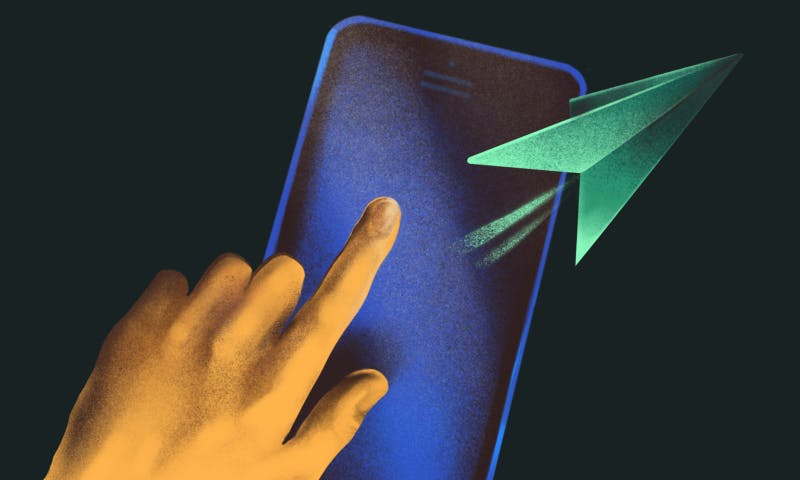Customer loyalty is key to a thriving subscription business. Learn more about how to identify and understand at-risk customers, plus ways to retain them
Churn is an ever-present threat to your business' growth. SaaS companies go to great lengths to reduce churn, devoting time and resources in an attempt to mitigate that risk. In order to get the best return on that investment, it makes sense to also target the right customers with your churn reduction strategy. This includes not only taking steps to learn the causes of churn, but also learning which customers are likely to churn so you can reach out to them before they do.
Below, we'll look at the various reasons customers churn and discuss what you can do about it. By the end, you'll have a better understanding of how to identify customers that don't feel they are getting the value from your product that they need to continue paying for it. We'll also discuss ways to improve and/or better convey your product's value to those customers.

What are at-risk customers?
An at-risk customer is a person or account subscribed to your product or service and showing signs that they are likely to cancel their subscription. In other words, they are at risk of churning. Identifying at-risk customers is an important step when trying to actively reduce churn and retain customers for longer.
5 ways to find out who your at-risk customers are
When you better understand why customers churn, you are well positioned to identify which customers are in danger of churning. This lets you know which customers should be the focus of direct churn reduction strategies. Let's take a look at some ways to identify these customers.
1. Use cohort tracking to identify patterns for at-risk customers
There was a time when figuring out the patterns that lead to churn would have been too much to take on. But, thanks to big data and tools like ProfitWell Metrics, it's easy to identify patterns of behavior that most often precede a customer churning.
2. Use customer segmentation to develop re-engagement plans
One well-known predictor of churn that we don't need machines to tell us about is inactivity. If a user isn't logging into the site and engaging with your product, you can bet they'll eventually decide they aren't getting their money's worth and cancel. ProfitWell Metrics can also help you identify customers who have been inactive, and how much inactivity is too much before the churn risk becomes great. You can use this data to reach out to those customers and help them re-engage with your product.
3. Automate involuntary churn away
Sometimes, the customer doesn't choose to churn. A surprisingly large number of churned accounts occur because of a failed payment. Tools like ProfitWell Retain allow you to use the power of automation to reduce the number of accounts lost to failed payments.
4. Measure net promoter score
The net promoter score for your product is the likelihood that existing customers would recommend it to a friend. This is a great indicator of how satisfied your customer base is, as a whole, with your product. By tracking this over time, you can see how well your efforts to improve satisfaction are, as well as take notice when satisfaction is dropping.
5. Find trends in customer support tickets
Aside from the feedback you solicit from customers, you have a great source of feedback in the customer support tickets that you receive. Pay attention to the problems people are having. If many of your support tickets are reporting the same problems, or indicate a misunderstanding about how things work, then those are likely reasons some customers will cancel their subscriptions.
Troubleshooting customer's dissatisfaction
The biggest reason customers churn is because of dissatisfaction with the product. The first step to reducing churn then, is to discover why your customers are dissatisfied, and taking steps to address those problems.
What is the impact of your customer onboarding?
A major source of dissatisfaction is when the customer simply doesn't know how to make the most of the product they're paying for. For this reason, you should have detailed tutorials and documentation that help the customer understand how to use your product effectively. More importantly though, your customers shouldn't have to go hunting for this information. Does your customer onboarding process provide users with the tools they need to succeed with your product?
Is your value proposition present through the customer lifecycle?
Every good salesperson knows that you can't make a sale without a good value proposition. What is it that makes your product stand out from the competitors? You likely present your value proposition throughout your sales material, but what happens after the customer makes a purchase? It's helpful to remind existing customers what makes your product special. A frustrated customer is likely to want to run off to the competition. If you aren't reminding them of what makes you valuable, you make that decision easier for them.
What do your customer feedback loops look like?
Of course, the best to find out why customers are churning is to give them the opportunity to tell you. Asking customers why they are leaving when they cancel is a good idea, but your customer feedback loop shouldn't start at the end of their journey. You should be regularly soliciting feedback from customers, so you can identify and fix weak spots in your product or service before they lead to churn.
How to reduce high churn-risk customers
Once you've identified your primary sources of churn, and used that information to determine which customers are at risk of churning, it's time to start taking a proactive approach to preventing churn.
Trigger automated re-engagement campaigns based on behavior
Re-engagement campaigns are designed to bring customers who haven't logged in for a while back to the application. The customer may have simply been busy and couldn't find the time to use your software. It's more likely, however, that they are either struggling to use the software or haven't found the value that it offers. Both of these can be mitigated by reaching out to the customer with resources that help them understand how to be successful using your product.
Improve your onboarding process for new customers
Ideally, you won't wait until the customer is inactive for a long period of time to start educating them on the usage of your software. By giving your customers the tools they need to succeed as soon as they sign up, you minimize the chance that they'll end up inactive after trying the software. This doesn't just mean that you link them to tutorials. Give them solid first steps that cover the basics straight away, so they can hit the ground running.
Make product knowledge easily accessible
A customer isn't going to keep your welcome email around forever. And even if they do, they aren't going to think to go hunt it down if they need to learn about your product. For that reason, all the resources that you point them to, should also be easy to find on the website itself. The more prominent your help and documentation section is, the fewer customers will struggle to find their way around.
Build a customer support community
Having a large support community is one of the positives that people will discuss when reviewing a product. While you want your customers to feel free to reach out to support for problems, not every problem is best handled that way. Simple questions about how things work can be answered just as well, and often quicker, by a community of engaged users. Having this type of resource can also be the difference between a customer that churns and one that doesn't.
Develop products based on customer feedback
Getting feedback from users means nothing if you don't put what you learn into action. By paying attention to the feature requests that users ask of you, you'll be increasing the value of your product. By paying attention to the bug reports and weaknesses in your product, and the frustrations of your users, you can also improve it.
Get learnings from at-risk customers
One reality that you must come to grips with in the SaaS business is that churn is inevitable. You can't save every customer. But, you can learn from your at-risk customers. By listening and understanding their issues and frustrations, not only can you improve your product, but their experience as well. They'll feel heard and valued and possibly keeping them from churning.
By learning what puts customers at risk of churning, and listening to the reasons of customers who do churn, you'll be in a better position to prevent those same reasons from pushing another customer to churn.
At-risk customers: Who's worth saving?
You can't save all your customers. As we've stated before, churn is inevitable. However, there are those that are worth saving—those that are a good fit. By understanding your customers and their behavior you can take the necessary steps to try to save them. ProfitWell Metrics will track customer behavior so you can identify patterns of at-risk customers, as well as segment your metrics to know what's working and what's not. So you can focus your efforts on the right customers.
Additionally not all customers churn because they're unhappy with your product. It could simply be mechanical—a failed credit card payment. ProfitWell Retain combines world-class subscription expertise with constantly evolving algorithms that leverage millions of data points to win back your customers automatically. We do all the work for you, so you can focus on improving your customer relationships and your product.
At-risk customers FAQ
What is churn risk?
Churn risk is the likelihood that a customer will cancel their subscription. A customer that is a high churn-risk is very likely to cancel.
Are at-risk customers worth saving?
Yes. You should try to save at-risk customers, but you need put your efforts into retaining or recovering the right customers. If extra expense needs to go into saving one, the expense must be measured against the lifetime value of the customers. Utilizing an automated tool like ProfitWell Metrics to help you collect and segment customer data, can help you see which customers are worth saving.
How can you save at-risk customers?
Depending on the reason customers are at risk of churning, will determine the proper steps to take to save them. However, always remind your customers of your value. Customers who are at risk of churning because they aren't finding value in the product can be helped by providing them with tools to help them use the product more effectively. Similarly, fixing any bugs with the product that may be pushing customers away will help to prevent churn as well. Implementing re-engagement plans for inactive users, etc. Whatever the reason is, if you determine they're worth saving, proactive communication is key.
How to increase customer loyalty?
From the onboarding process, and throughout the life of the customer, you should be providing them with easy access to the tools they need to succeed. This includes self-help tools such as documentation and community support channels, as well as excellent and ongoing customer support from your staff. Learning how to calculate churn rate and its formula is great too.




